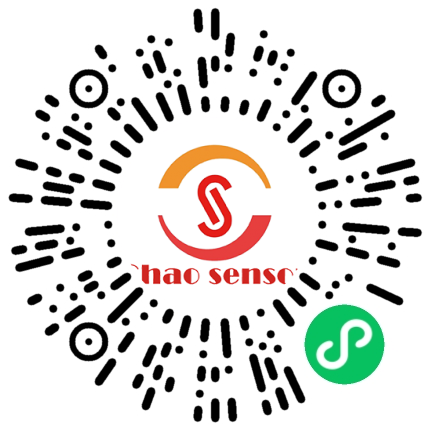CC-C05 Cloud Monitor
1. Product Introduction
The cloud monitor (SunLight IQ) is a professional meteorological observation device designed for accurate measurement of sky cloud cover and solar transmittance. The device uses cutting-edge large model algorithms, combined with professional optical sensing technology, to calculate and analyze the cloud layer's transmittance to sunlight in real time, providing users with high-precision cloud monitoring data. SunLight IQ is particularly suitable for applications in meteorological stations, climate research centers, agricultural monitoring, and solar power generation, helping users from all walks of life to more accurately understand and predict weather and its impact on solar energy utilization.
Features
Large model algorithm driven: Using advanced machine learning technology and big data analysis, SunLight IQ can accurately calculate the amount of clouds in the sky and the proportion of sunlight passing through the clouds, providing more accurate data than traditional methods.
High-precision optical sensing: Equipped with highly sensitive optical sensors to ensure accurate capture of changes in cloud cover and sunlight under different ambient lighting conditions, enhancing data reliability.
Real-time data analysis and feedback: The device can analyze data in real time and quickly provide users with cloud cover and solar transmittance measurement results through wireless network connection, supporting instant decision-making and analysis.
Ease of use and interactivity: Equipped with an intuitive user interface, the software allows users to easily set up, monitor and interpret data. The software also includes data visualization tools to help users intuitively understand changes in cloud cover and light transmittance.
Wide range of applications: Not only suitable for professional meteorological and climate research, but also can be used in agricultural production monitoring, solar power generation efficiency evaluation and other fields to meet a wide range of application needs.
3. Technical parameters
parameter | CC-C05 (Local version) |
Annual stability | ±1% |
Opening angle | 4° |
Time constant | ≤10S(99%) |
Sampling frequency | 10s~86400s |
Storing Data | Not supported |
Networking requirements | No Internet connection required |
Data Output | Status Flags Cloud cover level Solar transmittance Percentage of clear sky Few Clouds Percentage Cloudy ratio Half shade ratio Cloudy day percentage Latitude data Longitude data Sun Altitude Angle Sun direction angle oktas |
Output method | RS485 modbus format |
Operating temperature | -40 ~ 80℃ |
Protection level | IP67 |
weight | 10kg |
power supply | DC12-20V |
Current consumption | Maximum power consumption 43W Average power consumption in normal operation: 35W |
Data/power line | 10m (standard) |
CC-C05 Cloud Monitor (Local Version) Communication Protocol
CC-C05 Cloud Monitor (Local Version) uses RS485 communication. The serial port parameters are: baud rate 9600, 8 data bits, no parity bit, 1 stop bit. Modbus-RTU communication protocol is used (details are shown below).
Host computer sends: 01 03 00 00 00 0 D 45 CF
The cloud cover monitoring and analysis instrument response content is shown in the following table:
Register Address | Data name | illustrate | Decimal Places | unit |
0x0000 | Status Flags | Indicates whether the following latitude and longitude information is credible: 0x0041: Indicates that the following latitude and longitude information is accurate and reliable Other: Indicates that the following latitude and longitude information is unreliable | No decimals | none |
0x0001 | Cloud cover level | Cloud level: 1 sunny 2 few clouds 3 cloudy 4 heavy clouds 5 cloudy | No decimals | none |
0x0002 | Solar transmittance | Solar transmittance | 1 decimal place | % |
0x0003 | Percentage of clear sky | The percentage of clear sky conditions on that day | 1 decimal place | % |
0x0004 | Few Clouds Percentage | The percentage of light cloud conditions on that day | 1 decimal place | % |
0x0005 | Cloudy ratio | The percentage of cloudy days | 1 decimal place | % |
0x0006 | Half shade ratio | The proportion of semi-cloudy conditions on the day | 1 decimal place | % |
0x0007 | Cloudy day percentage | The percentage of cloudy days on that day | 1 decimal place | % |
0x0008 | Latitude data | The latitude data of the cloud monitoring analyzer location, retaining 2 decimal places For example, if the latitude is: 4 1.15 °, the data sent by this register is 4 115 , that is, 0x 1013 . | 2 decimal places | ° |
0x0009 | Longitude data | Longitude data of the location of the cloud monitoring analyzer, retain 2 decimal places For example, if the longitude is 121.23 °, the data sent by this register is 12123 , which is 0x 2F5B . | 2 decimal places | ° |
0x000A | Sun Altitude Angle | Real-time sun altitude angle, retain 2 decimal places For example, if the solar altitude angle is 4 1.15 °, the data sent by this register is 4 115 , that is, 0x 1013 . | 2 decimal places | ° |
0x000B | Sun direction angle | Real-time sun direction angle, retain 2 decimal places For example, if the sun direction angle is 121.23 °, the data sent by this register is 12123 , which is 0x 2F5B . The direction angle is 0° with due north and clockwise (i.e. north-east) is the direction angle of the sun. | 2 decimal places | ° |
0x000C | Oktas | The obstruction of the sky by clouds is measured in "oktas", which is a unit of eighths. It records how many eighths of the sky are covered by clouds. 0 means the sky is completely clear, while 8 means the sky is completely dark. | 0 decimal places | Oktas |


